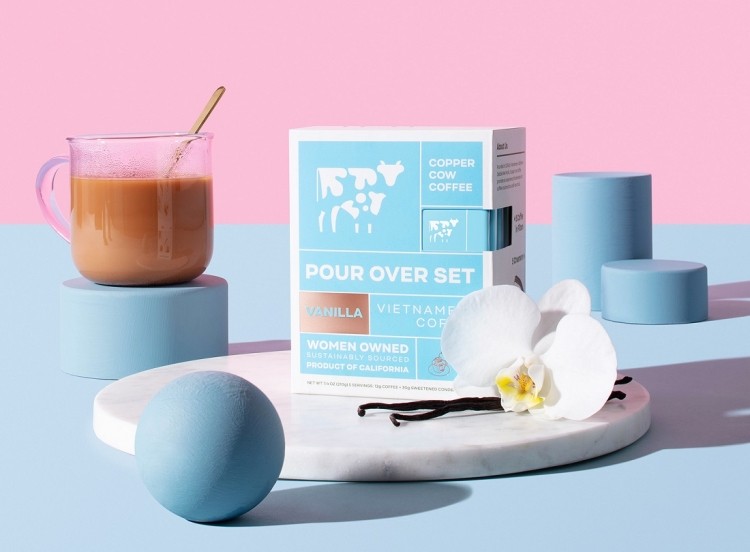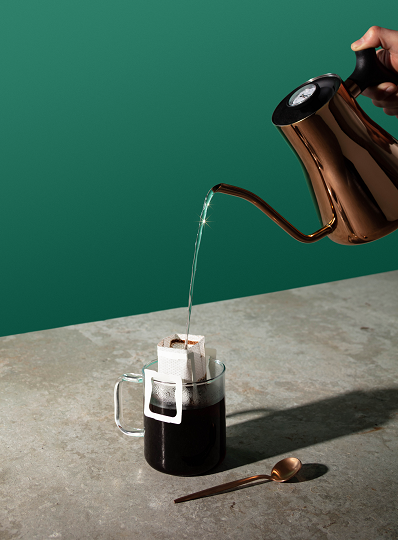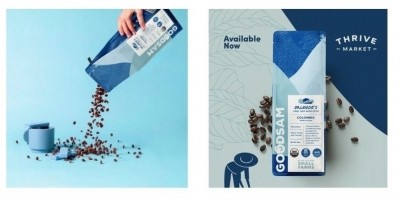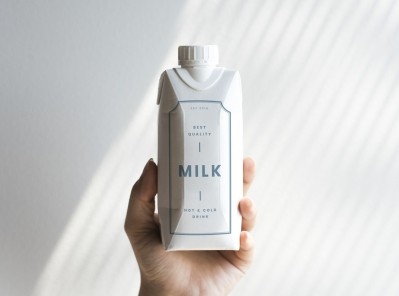Copper Cow Coffee closes $8.5m Series A funding round targeting ‘new generation of coffee drinkers’

The round was co-led by Cultivian Sandbox and Arborview Capital with participation from Siddhi Capital, Silverton Partners, Social Starts, Montage Ventures, CRCM, and Stormbreaker Ventures.
“A new generation of coffee drinkers is seeking an innovative experience and flavor profile, all-natural ingredients, and the convenience of café quality anywhere,” said Carolyn Farley, principal at Arborview Capital.
Elevating Vietnamese coffee
Born and raised in California, Mullin grew up with a love for Vietnamese culture instilled in her from her mother, who was born in Vietnam. Before launching Copper Cow Coffee, Mullin spent part of her career working in sustainability and supply chain management at the World Bank.
What is Vietnamese coffee?
Seen on virtually every street corner of Metropolitan Vietnam, Vietnamese coffee is traditionally brewed in a phin – a small metal cup that fits over a mug or cup– and brews slowly, but makes a strong and small coffee which resembles a thicker, more caffeinated espresso, according to Copper Cow Coffee.
In 2017, Mullin launched Copper Cow Coffee which blended her love of Vietnamese culture – particularly Vietnamese coffee – and passion for sustainability.
“I wanted to start my own company and create something that would elevate Vietnamese coffee,” Mullin told FoodNavigator-USA.
As the world’s second largest producer of coffee (according to World Atlas), Vietnam has largely been left out of the specialty coffee conversation, notes Mullin, who said up until recently Vietnamese coffee had been a market more focused on quantity and supply rather than product quality.
But the tide is changing as the third-wave coffee movement has gone from niche to global trend.
“There’s been a complete revolution of the coffee industry in Vietnam,” said Mullin who before launching Copper Cow Coffee traveled to Vietnam to find a sustainable supplier that could meet a set of high product quality standards such as testing the sugar levels of the coffee cherry before picking it.
Mullin found a co-op where she sources the coffee for Copper Cow products today.
“The co-op has really strict standards around the cultivation agriculture processes of coffee,” she said adding that the company pays twice the standard market rate for its coffee.
Recreating Vietnamese coffee for a new audience
The idea behind Copper Cow Coffee is to showcase Vietnamese coffee and its distinct but approachable flavor profile of rich, warm undertones in a new and novel format that excites consumers.
“The overall main reason why people buy our product is because of the way it tastes. Vietnamese coffee has a really unique but totally
‘mainstreamable’ flavor,” said Mullin.
To do that, Mullin launched the company’s flagship product: a single-use, pour-over format that nests into a coffee mug (a popular way of brewing coffee in Japan).
All consumers need to do is tear open the coffee bag, hang it over their cup, pour water, and add their preferred creamer. Copper Cow pour-over sets come up with small packets of sweetened condensed milk – the other traditional element that goes into making Vietnamese coffee.
To add to the excitement of the brewing Vietnamese coffee at home, Copper Cow has expanded into flavored coffee including salted caramel, vanilla, rose, and lavender, which are incorporated into the ground coffee.
The target consumer?
While on its face, it’s reasonable to assume that the company’s core audience might be the well-traveled individual who is well acquainted with Vietnamese coffee, but Mullin says the bulk of its audience over the past four years has been millennial females attracted to the vibrant nature of the brand.
And she believes Copper Cow has only scratched the surface of the $90bn US specialty coffee market which holds a 60% share of the total US coffee market, said Mullin.
“The youngest person that’s come to age in the specialty coffee era doesn’t really know how to make it” and many surprisingly don’t even own a coffee maker, said Mullin, adding that’s where Copper Cow aims to fit in by providing a simple way to create specialty coffee infused with some excitement and flavor intrigue.
Future growth plans: 'Pour-over is just our first expression'
Copper Cow Coffee has tripled revenue annually since its debut at the 2017 Winter Fancy Food Show four years ago where it won an innovation award, and soon after entered around 1,000 brick-and-mortar retailers.
Copper Cow Coffee is currently sold direct-to-consumer through the company’s website and also distributed in over 3,000 retailers including Whole Foods Market, Sprouts, and Walmart where its store placement ranges from the specialty coffee aisle to the Asian foods aisle.
Since making a hard pivot to e-commerce in the wake of the pandemic, its monthly subscription service has become the fastest-growing part of the business and a channel Mullin hopes to keep building and tailor to individual preferences.
“We’re really excited to invest in our coffee club. We’ve been able to create a path where you can try a new flavor every month. It’s a great way for you to have a perfect consistent cup of coffee but also excitement,” she said.
Along with building its online presence, Mullin said Copper Cow Coffee will use the new capital injection to introduce new product innovations.
“I think that the pour over is just the first expression,” said Mullin, who also has the goal of making the company’s supply chain as sustainable including its packaging footprint.



















